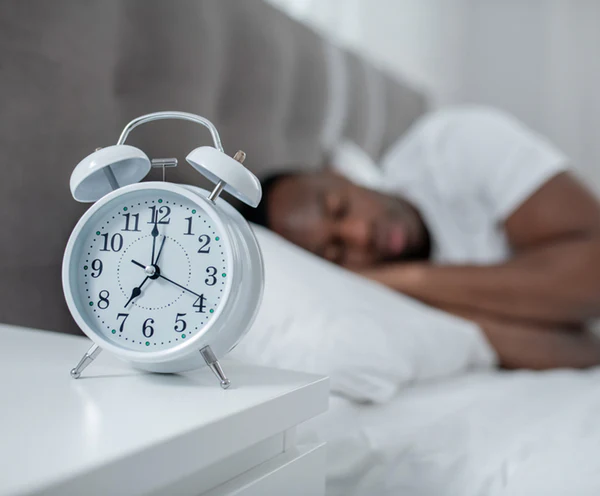As someone who’s studied sleep science and worked with clients trying to get more energy, I know there’s often a mismatch: people sleep enough hours, but at the “wrong” times—waking in deep sleep, tossing and turning, or feeling groggy all day. A sleep calculator helps you align with your brain’s natural cycles, not just aimlessly “go to bed earlier.”
In short, the goal is to hit your best sleep times—when your body is primed to fall asleep, cycle through REM and non-REM stages, and wake naturally. That alignment boosts alertness, mood, memory, and overall health.
The Science Behind “Best Sleep Times”
Sleep Cycles and Sleep Duration
Your body doesn’t sleep in one long continuous block but in cycles—typically about 90 minutes per cycle (though individual variation exists).
If you wake in the middle of a deep stage (say, REM or slow-wave), you feel groggy—even if you logged 8 hours. Hence, a sleep calculator helps you choose bedtimes or wake-up times that let you finish full cycles.
Most adults benefit from 4 to 6 full cycles per night—that’s about 6 to 9 hours of sleep.
Circadian Rhythm & Chronotype
Beyond cycles, your circadian rhythm (the internal clock) influences when your body is ready for sleep and wakefulness. Light exposure, melatonin release, core body temperature, and habitual routines all shape this rhythm.
People differ: “morning types” might find their best sleep times earlier (say, 10 pm to 6 am), while “evening types” do better going to bed closer to midnight. A sleep calculator helps you tailor rather than forcing one-size-fits-all times.
How a Sleep Calculator Works
- Choose a wake-up time or bedtime
You enter either when you need to wake up or when you plan to go to sleep. - Account for “fall-asleep latency”
Most calculators assume it takes ~15 minutes to fall asleep on average. - Multiple back-calculated times
The tool will suggest several best sleep times (bedtimes) so that, if you fall asleep then, you’ll finish an integer number of cycles before waking.
For example, if you must wake at 6:30 am, a calculator might suggest bedtimes like 9:00 pm, 10:30 pm, or midnight—each corresponding to 5 or 6 full cycles.
Alternatively, if you go to bed at 11:00 pm, it might suggest optimal wake times like 6:00 am or 7:30 am.
Sleep calculators from reputable sources (Sleep Foundation, AASM’s Sleep Education, etc.) follow this model.
How to Use It — Step by Step
Step 1: Determine Your Fixed Wake Time (or Bedtime)
If you have a fixed work or class start time, that becomes your anchor. For example, you must wake at 6:00 am.
Step 2: Use a Sleep Calculator to get candidate’s best sleep times
You enter “wake time = 6:00 am” and see several bedtimes spaced by ~90 minutes (e.g., 9:00 pm, 10:30 pm, midnight) that align with full cycles.
Step 3: Pick a bedtime that fits your lifestyle
Pick the one that is realistic and sustainable—you won’t always hit the “ideal” one, but aim close.
Step 4: Maintain consistency
Stick to that bedtime and wake time (even on weekends). Irregularity undercuts the benefit of planning your best sleep times.
Step 5: Adjust over time
If you still feel groggy, you can shift ±15 min, changing which cycle you wake at. You can also adjust for changes (travel, shifts, etc.).
Examples of “Best Sleep Times” in Practice
- Wake-up at 7:00 am → Suggested bedtimes: ~9:30 pm, 11:00 pm, 12:30 am
- Go to bed at 10:30 pm → Suggested wake-ups: ~5:00 am, 6:30 am, 8:00 am
These are your candidate’s best sleep times. Choose whichever fits your daily schedule, then keep it consistent.
Benefits & Evidence
- Better morning wakefulness: Avoid waking in deep sleep, reducing “sleep inertia.”
- Improved memory & mood: More REM and deep sleep cycles support brain repair.
- Reduced sleep debt: Calculators make it easier to see when you’re chronically undershooting your target.
- Sleep regularity matters: Studies show regular sleep timing correlates with lower risk of cardiometabolic disease and better longevity.
One large study even suggested seven hours of sleep is optimal for many in middle age, reinforcing that oversleeping or undersleeping both carry risks.
Tips to Reach Those Best Sleep Times (Sleep Hygiene)
Even if you know your “best sleep times,” habits matter:
- Wind down ritual: Dimming lights, reading, and relaxing can cue your brain.
- Avoid screens 1 hour before bed: Blue light suppresses melatonin.
- Control the environment: Cool, dark, quiet bedrooms are ideal.
- Limit caffeine, nicotine, and heavy meals late: These interfere with falling asleep or staying asleep.
- Exercise: Regular physical activity helps sleep, but avoid intense workouts too near bedtime.
- Nap wisely: Keep naps short (< 30 min) and earlier in the day to preserve nighttime sleep.
- Track & adjust: Use a sleep diary or app to see how your body responds to the chosen best sleep times.
Common Misconceptions & Pitfalls
- “I can catch up on weekends.” — While occasional recovery is okay, large swings disrupt circadian rhythm.
- “More sleep is always better” — Oversleeping can also lead to grogginess and health risks.
- Precise to the minute is mandatory — You’ll rarely hit it perfectly; the goal is to cluster around your best sleep times.
- One formula fits all ages — Older adults may need slightly different timing (e.g., earlier bedtimes). Adjust with awareness.
When to Consult a Specialist
If you consistently feel fatigued despite following your best sleep times and good sleep hygiene, see a sleep specialist. You might have:
- Sleep apnea
- Insomnia
- Restless legs syndrome
- Circadian rhythm disorders
A clinician may recommend a polysomnography (sleep study) or actigraphy tracking to refine your personalized best sleep times.
Summary & Take-Home
A sleep calculator for adults is not a magic bullet, but a smart tool to help you land in your natural rhythm and identify your best sleep times. By aligning your bedtime or wake-up time with full sleep cycles and your circadian rhythm, you’ll reduce grogginess, boost daytime energy, and support long-term health.
Start by choosing a fixed wake time (or bedtime), use a calculator to pick candidate times, test a schedule for a few weeks, and lean into consistent sleep hygiene practices. Adjust as needed.


